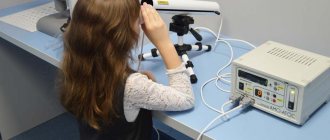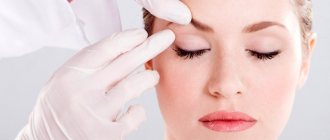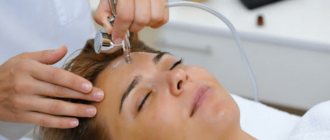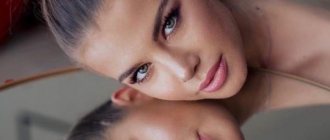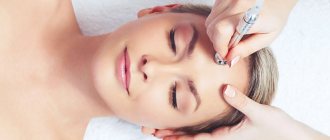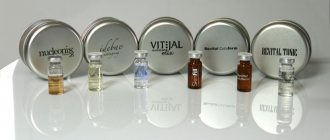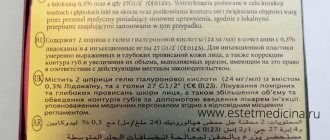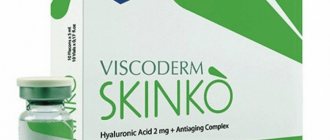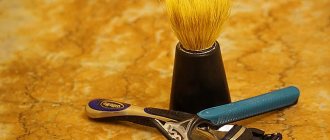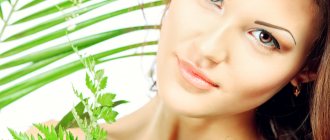Where is Chlorhexidine used?
The pharmaceutical product is used for the treatment and prevention of diseases caused by microorganisms sensitive to Chlorhexidine.
Depending on the concentration of the substance, the medicine can be used in the treatment of various pathologies.
After operations, in order to prevent infectious pathologies, doctors resort to using a pharmaceutical solution.
Chlorhexidine is often used for dental purposes for the treatment of dentures. In some cases, medication is used to treat periodontitis, stomatitis, and they are used to rinse the gums.
The medicine is used in:
- Urology
- Gynecology
- Surgery
Possible side effects
As with any other drug, the use of chlorhexidine is fraught with side effects. People sensitive to the drug may experience allergic reactions.
Sometimes the effect of a solution or gel is manifested by photosensitivity - sensitivity of the skin and mucous membranes to ultraviolet radiation.
Rinsing with a solution is fraught with a change in the color of tooth enamel, the deposition of tartar, and the taste may also be affected.
sells antiseptics with chlorhexidine. We supply certified goods of our own production in bulk, guarantee quality and competitive prices, and organize delivery.
Contraindications
Chlorhexidine is contraindicated:
- In case of hypersensitivity to the components of the drug
- People suffering from dermatitis
- Do not use together with other antiseptics, for example, with hydrogen peroxide
- For ophthalmic use, rinsing the eyes with this product is prohibited.
- For disinfection of the surgical field
- After intervention on the auditory canal and central nervous system
It is important to know that the pharmaceutical product should be used with caution when treating children.
Skin interaction
Chlorhexidine is a cationic surfactant with a broad spectrum of antibacterial activity; it also acts against fungi, but to a lesser extent. It destroys the membranes of microbial cells and coagulates their cytoplasmic proteins. At pH 5-8, chlorhexidine salts dissociate, resulting in the formation of a positively charged chlorhexidine cation.
This cation binds to the negatively charged bacterial cell wall. Chlorhexidine inhibits cell membrane enzymes and disrupts the interaction of lipids and proteins in membranes, the bacterial cell membrane becomes permeable and the cell contents leak out.
At higher concentrations of chlorhexidine (more than 0.01%), cytoplasmic proteins coagulate, denature, and the bacterial cell dies. Mold cells are destroyed by the same mechanism. At high concentrations, chlorhexidine destroys the virus envelope.
The effect of chlorhexidine lasts for several hours. It is non-toxic in low concentrations and does not irritate the skin.
Chlorhexidine applied to the facial skin for 8-12 weeks significantly reduces the amount of acne. An ointment containing chlorhexidine gluconate as an active substance reduces the formation of comedones. Acne occurs due to dysfunction of the sebaceous glands and excessive secretion of oily skin secretions.
If the disease is accompanied by hyperkeratosis, in which epidermal cells do not exfoliate regularly enough, then comedones are formed. Skin secretions are a breeding ground for bacteria, including Propionibacterium acnes. Bacteria multiply in closed pores and cause inflammation.
Antibacterial agents, which include chlorhexidine, act against bacterial flora, so inflammation is reduced. But these remedies do not treat the causes of acne, which explains the negative reviews about its use.
Some dermatologists also recommend using chlorhexidine to treat the skin of the face and body to treat acne. Other experts believe that chlorhexidine is toxic and should only be used when the benefits outweigh its harmful effects. Chlorhexidine against acne on the back and shoulders: the product is quite effective, since the skin in these areas is less sensitive.
Chlorhexidine is used to eliminate inflammation on the face.
Chlorhexidine for the face (consumer reviews of its use as an anti-acne product, both negative and positive) is more suitable for skin with intense secretion, that is, for oily skin or combination skin. On skin with insufficient sebum production and sensitive skin, chlorhexidine often causes peeling and irritation.
Brief instructions for use
To prevent sexually transmitted diseases, after unprotected sexual intercourse, after a maximum of 2 hours, 2-3 ml of a 0.5% solution should be administered into the urinary canal of a man, 1 ml into the canal for women and 5-10 ml into the vagina. You can treat skin areas near the genitals with the product. After administering the drug, try to postpone urination for 2 hours.
Your doctor should tell you about douching for gynecological diseases.
For sore throat, rinse the mouth with 0.5% or 0.2% Chlorohexidine solution.
For inflammatory pathologies of the urinary tract, it is necessary to inject 2-3 ml of 0.05% of the product into the urinary canal.
Before using the drug, you should consult your doctor.
Masks
Face masks that help treat acne are different from regular skin-moisturizing masks. To eliminate acne, the best masks are those that absorb excess oils, draw out impurities from the skin's pores and restore balance. After using the mask, the skin looks fresher.
Antibacterial ingredients are also added to the masks, such as charcoal, green tea or a few drops of chlorhexidine. When using masks, the size of comedones is reduced, and the removal of excess fat and impurities prevents the appearance of acne in the future.
Masks can be used 1-2 times a week for 15-30 minutes.
- Mix a mixture of bodyaga powder and cosmetic white clay with a 0.05% chlorhexidine solution. Ratio of mask components: 2 volumes of clay powder, one volume of bodyaga powder.
- Apply the product for 15 minutes. Then rinse with warm water.
- After using the mask, it is recommended to use sunscreen creams.
Where to put candles
Depending on the type of disease, the method of administering Chlorhexidine suppositories can be different: rectal or vaginal.
But it is important to understand that the use of suppositories is only permissible as prescribed by a doctor.
Before using the suppository, you need to wash and dry your hands well, then you need to remove it from the package and insert it into the vagina in a lying position.
To avoid leakage of the drug, do not rush to get out of bed.
Chlorhexidine suppositories help well with thrush and cystitis.
Chemical properties
To better understand what chlorhexidine is, you need to know its chemical properties. It appears to be a white crystalline powder and has a melting point of 137 °C. To make the drug, the powder is diluted in a certain proportion with water or alcohol. The resulting solution is colorless or light yellow.
It has a weak, unexpressed odor or is characterized by its complete absence. The chemical formula is C22H30CL2N10. It is stable, which makes it possible to achieve a normal bactericidal effect when applied to the skin, when rinsing, etc. When mixed with alcohol, the bactericidal and antiviral characteristics of the substance are enhanced.
Why is Chlorhexidine better than peroxide?
- Hydrogen peroxide and Chlorhexidine are antiseptics. Medicines differ in their spectrum of effects and medicinal properties.
- Hydrogen peroxide, unlike Chlorhexidine, is available in only one dosage form, which is not very convenient.
Chlorkesidine suppositories are used for the treatment of gynecological and urological pathologies.
Both products disinfect wounds and abrasions well.
Chlorhexidine has a wider range of therapeutic effects; it is used to treat the hands of the surgeon and nurse before surgery, and it is also used in gynecology.
With cosmetic clay
To treat acne, a peeling agent based on chlorhexidine and blue or black cosmetic clay is used. Cosmetic clay has beneficial properties, it contains minerals and can cleanse the skin.
When choosing the type of cosmetic clay, you need to consider your skin type. The frequency of the procedure also depends on the skin type: for oily and combination skin, it is recommended to do the mask 2-3 times a week, for dry skin - no more than once a week.
- Dilute the clay powder with water to the consistency of a thick paste.
- Mix the mixture with chlorhexidine in a 1:1 ratio.
- Apply the product to your face and massage for several minutes.
- Rinse off the composition with warm water.
Is it possible to drink antiseptic?
No you can not. Unfortunately, some people use antiseptics internally due to the presence of alcohol in the composition. The result of such use is burnt internal organs, severe poisoning, and this is at best; at worst, the person dies. For the production of antiseptics, two types of alcohol are used - ethanol and isopropyl. The second is cheaper, is not suitable for the production of alcohol-containing drinks due to toxicity and is not suitable for drinking, but due to its low price it is most often used in the manufacture of sanitizers.
What should an effective disinfectant contain?
Today there are two types of antiseptics that work well against germs, bacteria, and viruses.
The first type is alcohol-based liquids; it should contain at least 60%, preferably more. If the content is less, then the protein shell of microbes and viruses will not be destroyed and some of them will remain invulnerable. The alcohol must be ethyl or isopropyl.
The second type of antiseptic is based on chlorhexidine. It does not erode longer, provides longer-lasting protection, but damages the skin of your hands. However, alcohol also dries the skin, so such liquids usually contain softeners.
How to protect the skin of your hands after using an antiseptic?
High-quality formulations already include various softeners, moisturizers, glycerin, and vitamins that reduce the effect of alcohol and chlorhexidine on the skin. However, sometimes this is not enough, especially with frequent use of solutions. To prevent irritation, redness, and allergic reactions, do not use too hot water for washing, use cream soap instead of regular soap, drink more water (7-8 glasses a day). If cracks and wounds appear, buy special ointments, do not delay treatment.
User reviews
Marina Polishchuk
I bought this as a mouth rinse a year ago. I forgot the bottle in the medicine cabinet)) And then I got the flu, and unpleasant pimples appeared on my chin. I rushed to the first aid kit, and there it was!)) I applied cotton wool with chlorhexidine to the pimples for three days, morning and evening. In three days they dried up, and the redness around also went away. Just don’t lubricate your whole face with it, it’s very tight on the skin ! It's a good product for drying out acne.
Pashchenko
Recommended by a friend. Now I always use Chlorhexidine during PMS . The rashes still plague me, even though I’m already 21. The drug works and saves me and my face.
Chlorhexidine is used as a broad-spectrum disinfectant in hospitals, hospitals, and home medicine cabinets. Proven antimicrobial effectiveness and low cost are the basis for the long-term popularity of the drug .
Description
Chlorhexidine is a water-based antibacterial agent that is actively used to sterilize surgical and cosmetic instruments. This substance is a widely used antiseptic.
It is characteristic that the substance is equally effective against both gram-negative and gram-positive bacteria. It is important that during the treatment process, harmful microbes do not develop resistance to this remedy.
The drug is especially active when the temperature rises, but when heated to 100 degrees Celsius, the substance partially decomposes. The main advantage of the antiseptic is that it effectively affects purulent neoplasms. Moreover, it affects the skin for a long time.
